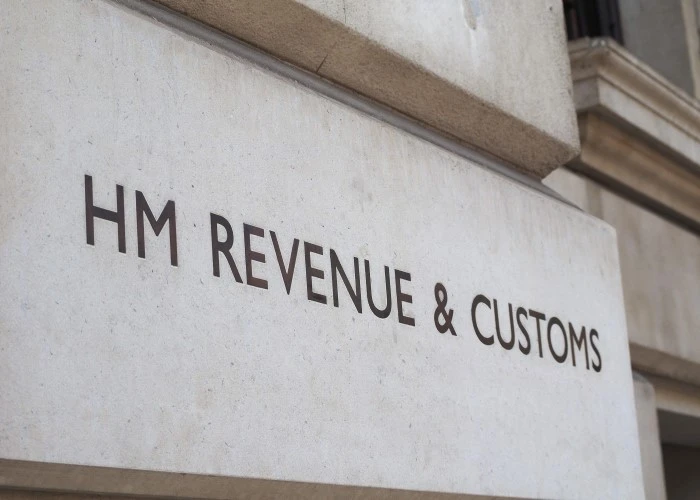What is a P45?

Whenever you leave a job as an employee, you’ll be given what’s known as a ‘P45’ by your employer.
A P45 shows how much taxable salary you’ve been paid in the current tax year, the tax deductions made by your employer and your tax code.
There’s plenty more to it than this, of course. So from what a P45 is to why it matters, we’ll help you make sense of everything in this article.
What is a P45?
A P45 is the form you’ll receive from your employer when you stop working for them, whether you’re employed full-time, part-time or operate through an umbrella company.
Your P45 shows how much tax you’ve paid in the current tax year, and what your tax code was at the point you left, this determines how much tax you’ll pay in your new employment role.
P45 meaning explained
‘P45’ is actually a reference code for this form. The official name is ‘Details of Employee Leaving Work’, which offers a more precise explanation.
Why do you need a P45?
The P45 is crucial in helping make sure you work under the correct tax code and therefore are taxed at the right rate by your employer, who will deduct income tax and National Insurance contributions from your salary.
If you work on the wrong tax code, you could either under or overpay tax.
How do I get a P45 and how long does it take?
You’ll be issued a P45 when you stop working for your employer, typically on your last working day.
It’s a legal requirement for employers to issue a P45, but for whatever reason, there’s no legal period in which it must be given to you.
Umbrella workers are employees, so you’ll be given your P45 if you leave for another umbrella, or switch to another employed role.
If you become an umbrella worker after contracting through your own limited company, you should ask your accountant to issue your P45.
When do you receive a P45?
Every time you stop working for a particular employer they need to give you a P45 form, by law.
You should receive this on your final day of employment or, as HMRC puts it, “if this is not practicable, without unreasonable delay”.
What is a P45 for?
As mentioned above, your P45 includes a record of your taxable pay, tax deductions and tax code for the tax year. Your new employer will need your P45 so they know how much tax they should subtract from your earnings when you start your new job.
What does a P45 look like?
A P45 is split into four parts – Part 1, 1A, Part 2 and Part 3.
- Part 1 will be sent to HMRC by your employer (you won’t be given this)
- Part 1A is for you to keep
- Part 2 is for your new employer
- Part 3 is also for your new employer, who will complete and send it to HMRC
Below is an example of Part 1A. This details the tax you’ve already paid in the existing tax year. When you receive this, keep it somewhere safe, just in case you need to submit a tax reclaim.
How long is a P45 valid?
A P45 applies only to the tax year in which it was issued. That’s not to say you shouldn’t hang onto it for longer, though. If HMRC were to launch a tax investigation, a P45 could prove crucial in demonstrating your tax payments.
HMRC recommends keeping records for at least 22 months after each tax year, or just under two years. You’ll want to keep Part 1A, specifically.
If you leave your job in one tax year and start your next role the following tax year, it’s not a problem. Your new employer will ask you to complete the ‘starter checklist’ (formerly called a P46) upon starting.
You don’t need a P45 to start a new job, but it certainly helps. If your employer doesn’t issue you with one when leaving, ask about the starter checklist – this helps make sure you work under the correct tax code from the word go.
Do umbrella workers get given a P45?
Yes. Umbrella workers are engaged under a contract of employment, which means you’ll be given one when you stop working with your chosen umbrella.
What about P45s for the self-employed?
Self-employed workers won’t receive a P45 for the simple fact that they aren’t employed. However, if you work as a contractor via your own limited company – where you are classed as an employee of your business – your accountant will be able to issue you with a P45. This is likely useful if and when you start working through an umbrella company or become a permanent employee.
P45 and emergency tax
If you don’t have a P45 and haven’t completed a ‘starter checklist’, you might find that your new employer places you on an ‘emergency tax code’.
Your employer and HMRC don’t have enough information about your earnings to know how much tax you should pay. Your emergency tax code can vary, but the rate at which you’ll be taxed is at least 20%. If you're paying more tax than you should, you can claim back tax you’ve overpaid.
The P45, like many tax documents, might seem confusing and even daunting on the face of it. But broken down, they include relatively straightforward – not to mention vitally important – information to help ensure your tax compliance.
If you have any questions about the P45 or want to learn more about working via an umbrella company, please speak to one of our experts.
Let's talk.
Interested in finding out more about becoming a Parasol employee? Or have a question for the team?
Here's how you can get in touch.
Already a Parasol employee and looking for support?
Contact Employee Support: 01925 644 860


